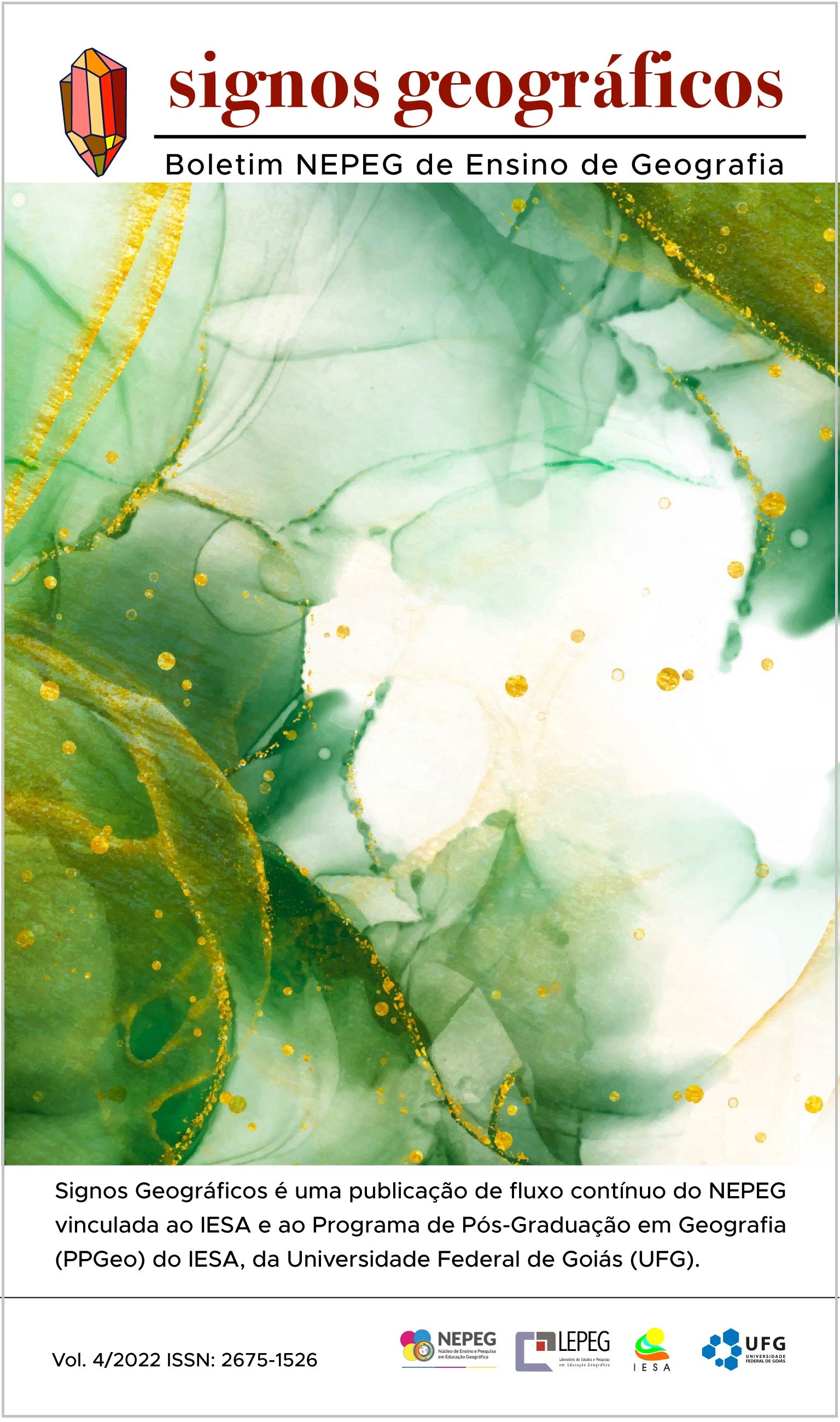READING AND SPATIAL ANALYSIS THROUGH MENTAL MAPS IN SCHOOL GEOGRAPHY
DOI:
https://doi.org/10.5216/signos.v4.74429Keywords:
teaching geography, school cartography, mental maps, geographical thinkingAbstract
This article aims to highlight the mental map as a relevant pedagogical proposal for the work of school geography linked to the process of construction of the students' geographic thinking. To develop this idea, at first, the relationship of geographic science with the issue of spatiality as a way of thinking is highlighted, and, subsequently, the contribution of cartographic language as a means to systematize reading and spatial analysis. In this sense, the mental map is required as a proposal for a cartographic representation that enables the subject who builds it to highlight different contexts, interpretations and perceptions about a given space or place. For this, some examples of the construction of mental maps from the perspective of school activities will be presented and discussed, highlighting the potential of this material for the development of a more critical reading and analysis of the geographic space.








